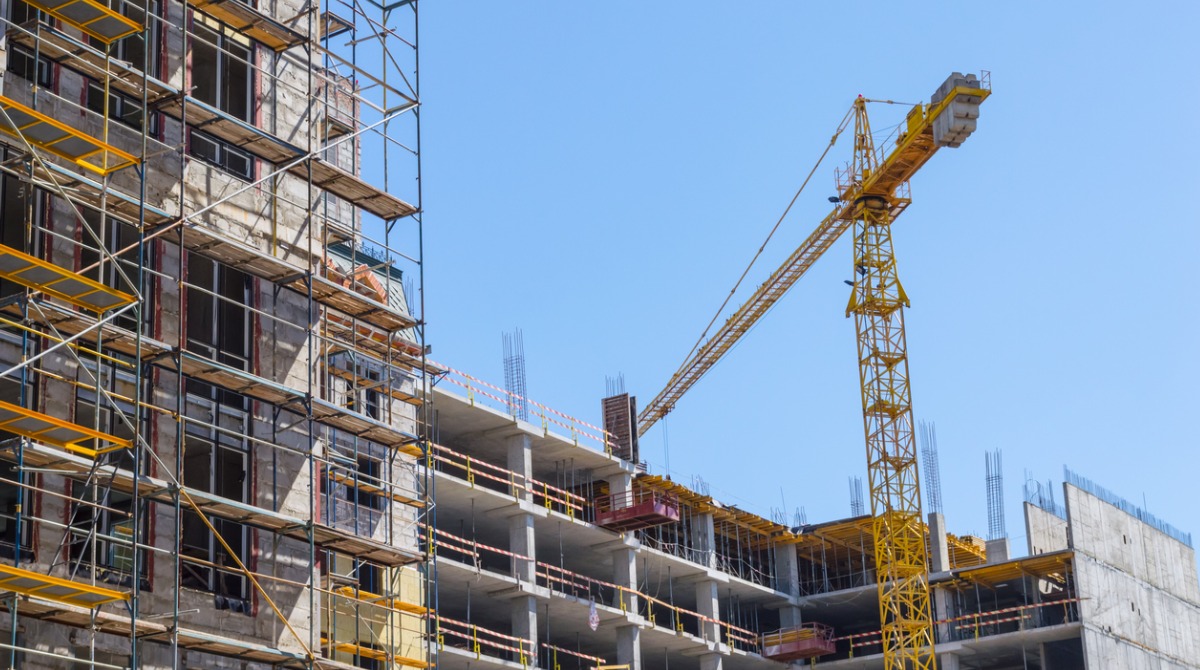
Ontario has over 1.25 million new homes already in the development pipeline but needs to figure out how to convince builders to get shovels in the ground. The Regional Planning Commissioners of Ontario (RPCO) have concluded in a new report on the state of the province's unbuilt housing supply.
The figures show the number of homes developers have been approved for permits to build, but have not yet materialized. When they become approved by the municipalities, there is no set timeline of when a developer must build the homes.
The RPCP's calculations are based on numbers from late last year, before the Ford government passed Bill 23, the More Homes Built Faster Act. The bill was set up to help the government build 1.5 million new homes over the next decade -- a figure that does not include the homes already approved to be built. Planners say that if the province could incentivize developers to build what is already approved by the municipalities, they would be 85 percent of the way toward their goal.
"I think the report starts to tell the story that the housing supply challenge isn't really a land supply or development approval problem. The bigger problem is, probably, how do you compel a developer to build? How do you increase the rate of construction?"
RPCO Chair | Thom Hunt
CBC News states reports that Premier Doug Ford's government says Ontario is in a housing supply crisis, and has introduced a number of bills to address it, including Bill 23. The legislation contains a number of controversial elements including waiving or freezing development charges which are used to pay for sewers, parks and community centres around the new homes.
The province has also proposed what the government has called a "land swap" to remove pieces of the protected Greenbelt to build 50,000 new homes, a move that contradicts an earlier promise not to touch protected areas.
Hunt stated that the RPCO report shows the government does not need to move head with that plan. He said the takeaway from this is that you do not need to do urban boundary expansions for the most part and that you don't need to go into the Greenbelt area. He also believes the numbers suggest that the government will need to make special efforts to ensure that affordable housing will be built amongst that supply. Partnerships between the federal and provincial governments, not-for-profits and the private sector will be required to address that urgent need.
Toronto city councillor, Brad Bradford, cautions people against looking at the numbers in the report and thinking the province has solved the housing crisis. He said that getting these homes built is more complex. Some of those issues are:
- Rising interest rates
- Inflationary pressures on supplies
- On-going labour shortage
"I think that the development pipeline often gets weaponized by folks that don't want to see more housing built. We are facing historic headwinds in our effort to deliver more housing and deliver more supply across Toronto. It's going to require the whole of government and collaborative response with industry. "
Toronto City Councillor | Brad Bradford
Toronto's chief planner, Gregg Lintern, said the city approved an average of over 29,700 residential units a year from 2017 to 2021. During that same period, only around 16,000 units were built annually. That creates an average yearly surplus of about 13,700 units, ensuring a steady supply of approved housing. He stated that while the City typically approves twice as many units as get built, it is important to enable a full range of housing supply to meet diverse needs and work to improve the development review process and reduce approval timelines.
Matti Siemiatycki, the director of the Infrastructure Institute at the University of Toronto, said the RPCO's numbers show that there are sometimes misconceptions around the approvals process. While approvals can take time for some projects, it is clear that there are market forces at work that result in approved developments not getting built immediately, or not at all. He thinks we need much more of an investigation into why that happens.
Siemiatycki states that developers are sensitive to market forces and are also wary of community pushback over projects. Sometimes they are also subject to internal shifts in direction within their own companies which can derail approved housing plans.
Victoria Podbielski, a spokesperson for Municipal Affairs Minister Steve Clark said the government cannot sit idly by as the cost of housing continues to rise. Even if all of the homes in the report are built, the province will still need hundreds of thousands more to meet the 1.5 million home target by 2031. Bill 23 is already speeding up approvals and the construction process.
Podbielski said they will continue to build on this progress with further housing supply action plans that ensure red tape and excessive costs do not stop hypothetical approvals from becoming real homes.
Posted by Judy Lamelza






